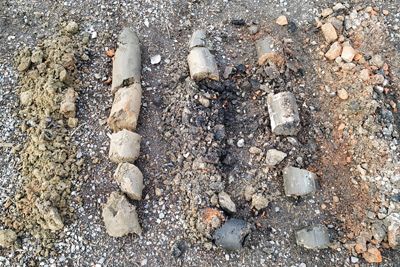Soil Percolation Tests Private Sewage Disposal Systems - NYC, Manhattan, The Boroughs, Nassau County, Suffolk County, Long Island, and New Jersey - Kagaoan Engineering

Soil Percolation Inspections for Individual On-site Private Sewage Disposal Systems
Private Sewage Soil Percolation Testing
Soil percolation testing involves digging a hole in the soil to a specific depth and filling it with water to simulate the load that will be placed on the soil by wastewater. The time it takes for the water to drain from the hole is measured to determine the percolation rate.
There are several factors that can influence the outcome of a soil percolation test. These include the soil type, the depth of the hole, the size of the test area, and the time of year the test is conducted. It's important to keep each of these factors in mind when conducting a soil percolation test to ensure accurate results.
Soil type is arguably the most important factor to consider. Different types of soil have varying levels of permeability, which directly affects how quickly water can pass through it. Sandy soils are typically more permeable than clay soils, which means that water can percolate more quickly through them. This can affect the size of the disposal area required for a given property.
The depth of the hole is also an important factor to consider. A hole that is too shallow may not provide an accurate representation of the soil's ability to handle wastewater. Conversely, a hole that is too deep may result in an overly conservative estimate of the percolation rate.
The size of the test area is another important consideration. Typically, a soil percolation test will involve several holes spread out over the proposed disposal area. This allows for an accurate representation of the soil's ability to handle the entire load of wastewater being generated by the property.
Finally, the time of year the test is conducted can also have an impact on the results. During periods of heavy rain or snowfall, soil can become saturated and unable to handle additional water. Conducting the test during these periods may not provide an accurate representation of the soil's true percolation rate.
It's also important to note that soil percolation tests are just one aspect of designing a sewage disposal system. Other factors, such as the property's location, the size of the property, and the number of people that will be using the system must be taken into account as well.
Contact Kagaoan Engineering
In conclusion, soil percolation tests are a critical component of designing sewage disposal systems for residential and commercial properties. These tests help determine the suitability of soil for wastewater disposal and provide valuable information on the required size of the disposal system. By taking all of the necessary factors into account, property owners can ensure that their sewage disposal systems are designed to meet their specific needs in a safe and effective manner.
Please contact us today for a free consultation.
About Kagaoan Engineering
Kagaoan Engineering provides a full range of engineering, consulting, and special inspection services for both large and small projects. Our staff includes professional and technical engineers who are equipped with experience in all facets of real estate development and construction-starting with property acquisition, conceptualization, site investigation, design development, construction quality assurance and quality control, to project close out.

